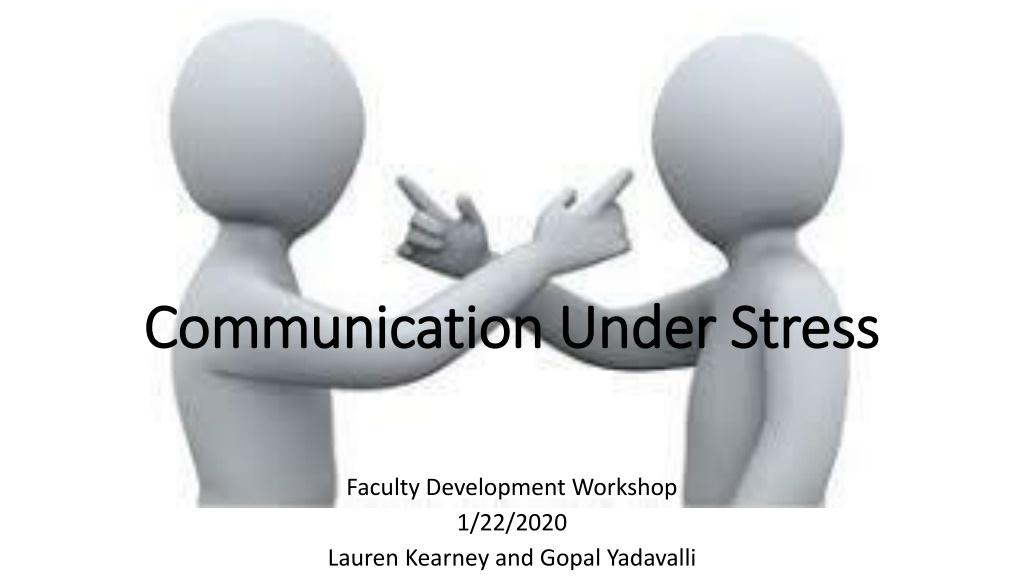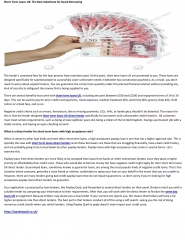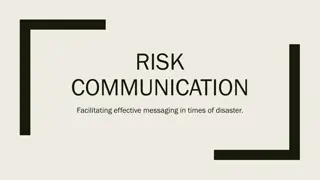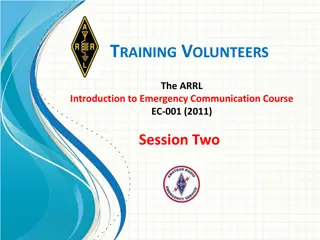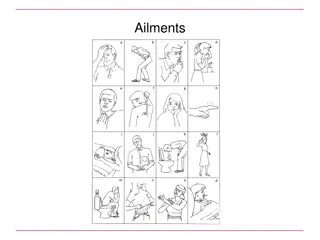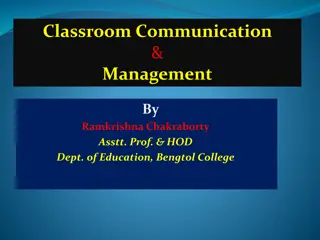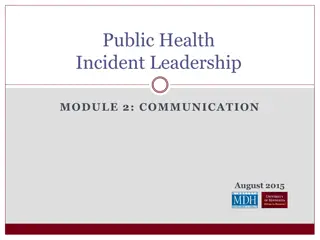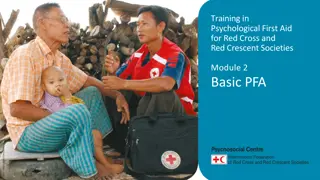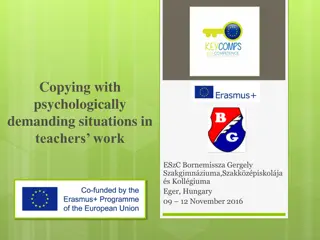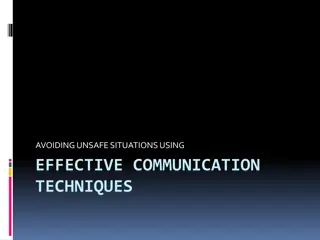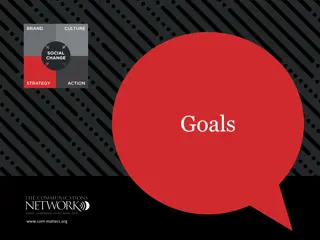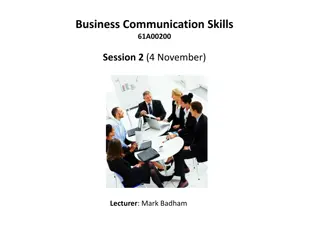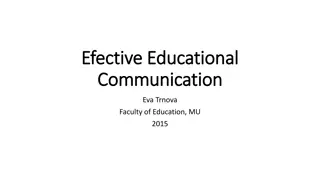Effective Communication Strategies for Stressful Situations
Explore the key strategies for effective communication during stressful situations as discussed in the Faculty Development Workshop on Communication Under Stress. Learn how to identify crucial conversations, promote productive dialogue, and enhance patient safety while avoiding burnout. Discover tips such as meeting face-to-face, perspective taking, understanding motives and arguments, offering genuine apologies, and resolving misunderstandings to navigate challenging discussions successfully.
Download Presentation

Please find below an Image/Link to download the presentation.
The content on the website is provided AS IS for your information and personal use only. It may not be sold, licensed, or shared on other websites without obtaining consent from the author. Download presentation by click this link. If you encounter any issues during the download, it is possible that the publisher has removed the file from their server.
E N D
Presentation Transcript
Communication Under Stress Communication Under Stress Faculty Development Workshop 1/22/2020 Lauren Kearney and Gopal Yadavalli
Learning Objectives IDENTIFY A CRUCIAL CONVERSATION . DESCRIBE SKILLS TO PROMOTE PRODUCTIVE DIALOGUE.
Patient safety Burn-out
So you find yourself in a Crucial Conversation How can we do better?
1. Meet face to face 2. Perspective taking 3. Establish your motive 4. Understand your argument 5. Apologize 6. Fix misunderstanding
1. Meet face to face Avoid written communication. In person discussion is preferred to over the phone. 2. Perspective taking 3. Establish your motive 4. Understand your argument 5. Apologize 6. Fix misunderstanding
1. Meet face to face 2. Perspective taking What does the other person think and feel? 3. Establish your motive 4. Understand your argument 5. Apologize 6. Fix misunderstanding
1. Meet face to face 2. Perspective taking 3. Establish your motive Decide what your goal is and continue to remind yourself. 4. Understand your argument 5. Apologize 6. Fix misunderstanding
1. Meet face to face 2. Perspective taking 3. Establish your motive 4. Understand your argument Be honest about your knowledge. 5. Apologize 6. Fix misunderstanding
1. Meet face to face 2. Perspective taking 3. Establish your motive 4. Understand your argument 5. Apologize Sorry is a powerful word. Only say it if appropriate and if you mean it. 6. Fix misunderstanding
1. Meet face to face 2. Perspective taking 3. Establish your motive 4. Understand your argument 5. Apologize 6. Fix misunderstanding Identify and address remaining failures of understanding.
1. Meet face to face 2. Perspective taking 3. Establish your motive 4. Understand your argument 5. Apologize 6. Fix misunderstanding
References Adekolujo, O. S., Roskos, S. E., & Adekolujo, O. O. (2019). Teaching medical residents to collaborate with specialist consultants. International Journal of Medical Education, 10, 172 173. doi: 10.5116/ijme.5d6b.85bc Fisher, R. (2013). Getting to Yes. Yuan Liu/Tsai Fong Books. Harvard Business Review Press. (2017). Harvard Business Review Guide to Dealing with Conflict. Boston, MA. Hughes, R. (n.d.). Patient Safety and Quality: An Evidence-Based Handbook for Nurses. S.l.: Agency for Healthcare Research and Quality (US). Itri, J. N., Yacob, S., & Mithqal, A. (2017). Teaching Communication Skills to Radiology Residents. Current Problems in Diagnostic Radiology, 46(5), 377 381. doi: 10.1067/j.cpradiol.2017.01.005 Patterson, K., Grenny, J., McMillan, R., & Switzler, A. (2002). Crucial conversations: Tools for talking when stakes are high.
Communication Under Stress Communication Under Stress Faculty Development Workshop 1/22/2020 Lauren Kearney and Gopal Yadavalli
